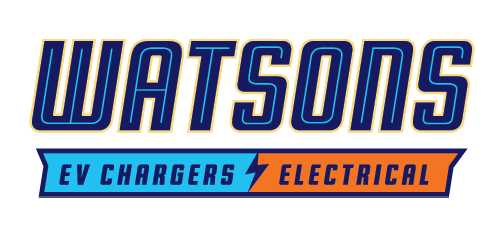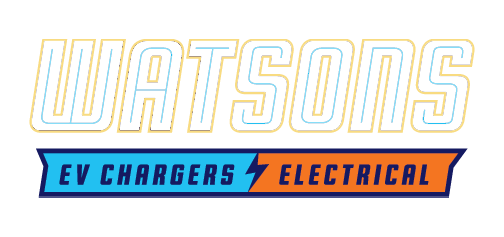How Microgrids/Nanogrids Are Shaping Residential Electricity
Renewable energies are growing at an exponential rate. In 2010, only 1.7% of global energy came from renewable energies like wind and sun. By 2021, these renewables hit 8.7%, far exceeding expectations. Most experts did not expect that solar energy would not reach 550 terawatt-hours until 2030, but that goal was reached in 2018. One of the major catalysts that sparked the explosion of solar energy is the adoption of microgrids. In fact, microgrid energy is expected to revolutionize the way the residential electrical grid works.
Read on to learn more about how microgrids and nanogrids impact the residential electrical grid.
What Is the Residential Electrical Grid?
When people talk about the grid, they are referring to the infrastructure that brings electricity from where it is produced to where it is used. The residential grid involves:
The power plant (where electricity is made).
Your house (where the energy is used).
Your utility company (how power is transferred from the plant to your home).
Historically, the electrical grid could only work with centralized power plants like coal-fired plants. A centralized power plant provides electricity to all of the homes, businesses, and properties in a large area. This plant is also connected to other major power plants through a national microgrid.
What Are Microgrids?
If an extensive network of power plants, substations, and properties make up a macrogrid, a nanogrid is a much smaller version of this network. A microgrid is an entirely self-contained electrical network that allows a single building or small community to produce, store, and use electricity. Some argue that a nanogrid refers to a single home while a microgrid includes several buildings, but the terms are often interchangeable. The bottom line is that a microgrid or nanogrid is a self-contained electrical grid used on a smaller level than the national grid.
A residential microgrid typically relies on solar energy panels to create energy. That power is then stored in a solar energy storage system and managed by a microgrid energy management system, including a smart home electrical panel. This setup combines the more extensive, nationwide electrical grid’s production, storage, transportation, and usage into a much smaller package.
Constant Access to Power
You might wonder, “how do microgrids work at night or when the sun is not visible?” One of the biggest criticisms of renewable energy is that solar and wind power are not produced. A microgrid energy storage setup, like a solar house battery backup system, alleviates this problem by taking energy created during sunny hours and saving it for use when the sun goes down.
Microgrids can also remain connected to the larger electrical grid to draw power when needed. Solar microgrids keep the lights on if the primary electrical grid experiences a power outage. If your solar system runs into problems, your house will remain powered by the macrogrid. You get the best of both worlds and only pay your utility company for the power that you actually use from them.
Some of the earliest adopters of solar microgrids are hospitals and data centers. These kinds of facilities benefit from reduced utility costs and peace of mind that they will not lose power. Solar nanogrid technology is not just for large industrial complexes and healthcare centers. Single-family homes, multi-family residences, and commercial properties are perfect candidates for microgrids.
The Rise of Microgrids
While microgrids have actually been around for a while, they are seeing a sudden surge of interest. This rise in popularity has to do with the increased effort to adopt renewable energies, the increased affordability of equipment, and the availability of new technologies.
Homeowners who grow weary of rising utility costs are looking toward microgrids as a way to cut costs. Traditional home solar systems would allow you to put surplus energy back on the national electrical grid to offset your monthly utility bills. A nanogrid with solar storage will enable you to store and use power as needed. The result is not just the reduction in utility costs but the near elimination of an electric bill.
Microgrids also open the door to cost-cutting and eco-friendly technologies. Consider electric vehicles. According to AutoPacific’s Future Attribute Demand Study (FADS), interest in EVs has tripped in just a few years. The rise in electric vehicle sales and the exciting new EV options (like the Ford F-150 Lightning, GMC Hummer EV, and the upcoming Dodge eMuscle EV) means more drivers are looking to replace their gas vehicles with EVs.
Nearly 80% of EV owners have local electrical contractors install an electric vehicle charger at home. A solar microgrid allows EV drivers to keep their vehicles fully charged at practically no charge from renewable energies.
Combining storage batteries, renewable energy, and smart home controls gives people more control over their home energy use. By staying off the grid as much as possible, homeowners will drastically reduce their utility costs and quickly recoup electrical upgrade costs.
Microgrids not only benefit the homes and commercial properties that use them, and these nanogrids also take the pressure off of the aging, larger macrogrid. Even with efforts from the federal and state governments to upgrade existing electrical infrastructures, it will be many years before the grid is safe from failure. Creating individual microgrids will help the existing infrastructure survive until it can be upgraded appropriately.
Should I Consider a Microgrid for My Home, Investment Property, or Business?
It is hard not to get excited about the possibility of detaching from the larger, more expensive electrical grid and moving towards a microgrid. You might be wondering if a nanogrid is right for you. There are a few questions you can ask yourself:
Do you want to cut your dependence and payments to your local utility company?
Are you interested in using more sustainable, renewable, and clean energy?
Do you have concerns about power outages in your area?
Would you like to contribute to the stability of your regional electrical grid?
Do you want more control over how and when energy is used in your home?
If you said “yes” to any of these questions, you are perfect for a microgrid setup. A nanogrid system will give you the maximum value from your solar power, smart panels, and home energy storage system.
Creating a microgrid is not a DIY project; that is where Watson’s Charging Stations & Electric comes into play. We have been serving the Gilroy, CA, and Santa Clara Valley for years as the leader in the electrification movement. We understand the technology and can help you design and install a microgrid system that will meet your needs while futureproofing your home for generations to come.
Call us today to set up your complimentary consultation and take the first step towards energy independence.


